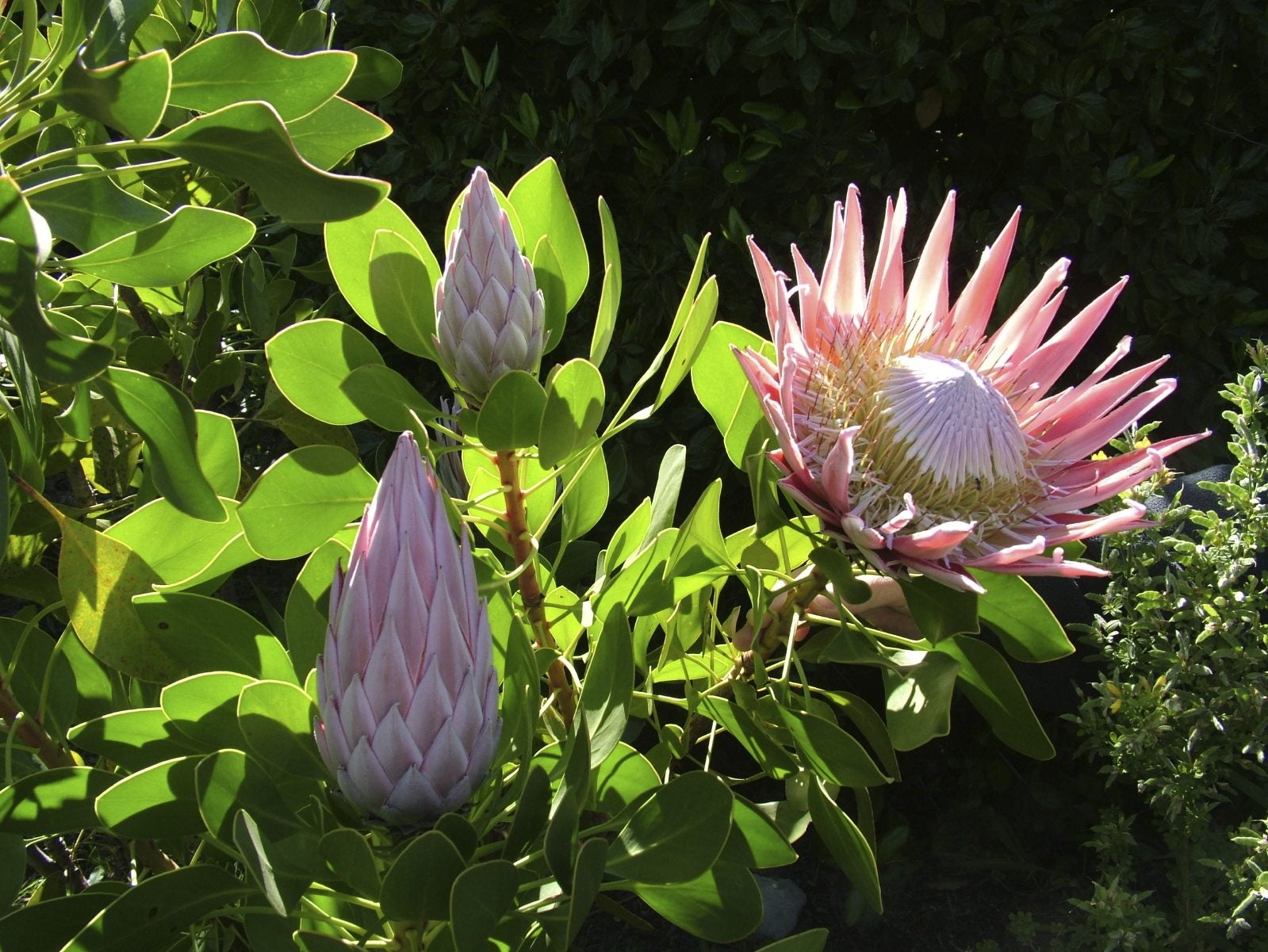Protea Plant Care: Tips On Growing Protea Plants


Protea plants are not for beginners and not for every climate. Native to South Africa and Australia, they require heat, sun, and extremely well-drained soil. If you’d like a little bit of a challenge, though, protea flowers are beautiful and very unique. They are also perfect for that rocky, hard-to-use part of your garden. Keep reading to learn more about protea care and information.
Tips on Growing Protea Plants
One of the first things necessary in growing protea is soil. Protea plants must have well-drained soil. Their roots grow mostly horizontally, just below the surface of the soil. If water is allowed to sit and pool on the surface, the roots will become waterlogged and the plant will die. If you’re planting your protea outside, mix bark and grit into your soil to improve drainage. If you’re planting it in a pot, use a mixture of even parts peat, bark, grit, and styrofoam beads. Water your established plants every two to three weeks. If your plants are just starting out, water them more frequently. Proteas can stand a range of temperatures, from 23 F. (-5 C.) to 100 F. (38 C.), though they may not survive long exposure beyond that. Protea plants thrive in acidic, nutrient-poor soil. Avoid fertilizer; an abundance of phosphorus, in particular, will kill them. If you have a dry, acidic, rocky part of your garden that can’t seem to support life, you may find protea plant care fairly easy. Protea flowers come in large clusters surrounded by bright, spiky bracts that make for a very unusual and striking appearance. The flowers can be easily dried for flower arrangements. Pick them at their peak, strip away the bottom leaves, and hang them upside down in tightly bound clusters in a dark, breezy spot for two weeks. The flowers retain their color very well and are particularly popular in Christmas wreaths.
Gardening tips, videos, info and more delivered right to your inbox!
Sign up for the Gardening Know How newsletter today and receive a free copy of our e-book "How to Grow Delicious Tomatoes".

The only child of a horticulturist and an English teacher, Liz Baessler was destined to become a gardening editor. She has been with Gardening Know how since 2015, and a Senior Editor since 2020. She holds a BA in English from Brandeis University and an MA in English from the University of Geneva, Switzerland. After years of gardening in containers and community garden plots, she finally has a backyard of her own, which she is systematically filling with vegetables and flowers.
-
 Try The Trend – Turn Any Bed Into A Keyhole Garden With This Clever In-Ground Composter
Try The Trend – Turn Any Bed Into A Keyhole Garden With This Clever In-Ground ComposterKeyhole gardening is an efficient and sustainable practice that saves space. Get started on this DIY project quickly and easily with an in-ground composter.
By Bonnie L. Grant
-
 4 Superfast Composting Methods: Turn Waste Into Garden Gold In 30 Days Or Less
4 Superfast Composting Methods: Turn Waste Into Garden Gold In 30 Days Or LessTry the fastest composting methods to turbocharge your pile and transform kitchen scraps and garden waste into finished compost in just a few weeks.
By Mary Ellen Ellis